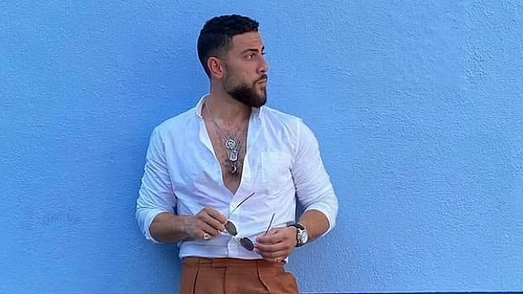Why
do wounds itch when they heal? The injured tissue releases the neurotransmitter
histamine abundantly. Immediately after injury, it triggers an inflammatory
response and later prompts tissue stem cells to migrate to the damaged area and
repair the tissue.
It turns out that histamine irritates the
nerve endings in the skin, causing itching.
The
skin, the body's largest organ, serves as a protective and shielding layer for
the rest of the body's critical organs.
If
this protective layer is damaged, the healing process begins, and the skin
returns to its healthy and normal state.
The
best approach to healing a wound, like any other injury, is to leave it alone.
Scratching, picking, rubbing, and prodding it may cause the wound to close and
become infected. Yet, this is a difficult task when the itching of wounds
begins, which can be painful at times.
Read: Does tooth decay have nothing to do with sweets?
The
wound-healing process is divided into four sequential and occasionally
overlapping stages.
1st Phase: Hemostasis
Platelets
are naturally released at this stage. Platelets then cause glycoprotein to be
released from cell membranes.
Platelets
adhere to one another, forming a mass. Fibronectin and fibrin, on the other
hand, are produced at the site of injury.
When
the two are together, they produce a stopper that stops blood loss and retains
particles and proteins.
While
waiting for the collagen to form and deposit, the plug acts as the wound's
primary structural support.
2nd Phase: Inflammatory
The stage at which polymorphonuclear neutrophils arrive at the site of injury to combat infection and remove debris.
This medication disinfects the wound. After
the neutrophils have completed their task, macrophages arrive at the site of
injury to remove injured tissue and wound debris.
Read: Why do drugs come in different forms?
3rd Phase: Proliferative
The
stage at which vascular endothelial cells generate freshly formed blood
vessels.
When
the fibroblasts mature, they begin to excrete fibronectin and collagen. This
results in the formation of a rudimentary extracellular matrix.
At
the same time, epithelial cells proliferate, and these cells eventually become
the cover of the new tissue.
Because
of the myofibroblasts, the wound is now smaller at this point after all of
these processes have occurred.
4th Phase: Maturation and re-modification
The
collagen is re-oriented and re-modeled at this stage. Apoptosis is the process
through which cells die after their jobs are completed.
Aside
from the various cells, growth factors are released while the wound heals,
speeding up the healing process even further.
All
types of injured cells are replaced or restored throughout the healing process.
During this mending process, nerve cells are also included.
Itching
occurs as the newly regenerated nerve cell begins to grow and become useful in
transmitting and receiving information.
Read: How Many Eggs Are In An Ovarian Follicle?
The
patch of skin where the injury is located is extremely thin in comparison to
the uninjured skin, which is thick and healthy.
As
a result, the newly produced nerve cells are more sensitive, making itching
even worse.
Itching
could also be caused by dryness. Like the skin, the oil glands are damaged. The
lack of natural oils causes the skin to become dry, which causes irritation.
Some
experts feel that histamine contributes to the itching of healing wounds.
During the inflammatory phase of the healing process, histamine is released.
The
majority of wounds are not dangerous. It is a natural outcome of an injury.
Bleeding is possible.
Scanning
forms over the site of the damage are sometimes used. Scabs, which are hard and
crusty parts, can also occur.
Scabs
really protect wounds from infection and allow for the development of new skin
without any disruption.
FAQs Related To WHY Do Wounds Itch When They
Heal
Is it normal for healing wounds to itch?
Itching,
or pruritis, is a normal part of the healing process after a wound.
Does itching mean healing or infection?
Itching
is generally a sign of healing.
Read: Can Flat Feet Cause Sciatica Pain
What are the 4 stages of wound healing?
- Hemostasis
- Inflammatory
- Proliferative
- Maturation and re-modification
When should you stop covering a wound?
Once
the wound has formed a scab!
Why do wounds hurt more at night?
These
nerves alert the spinal cord that the skin is being stimulated during the
wound-healing process.
Such
messages are perceived as irritating by the brain. These nerves are also
sensitive to compounds released by the body in response to an injury, such as
histamine.
Why do wounds hurt more at night?
Because
of the enhanced inflammatory processes that occur at night, bone stress
injuries can feel worse at night.
This
process is critical for bringing necessary cells to the affected site for
growth, remodeling, or healing.
Why do wounds hurt more when healing?
This
inflammation is caused by the body's immune system attempting to defend the
wound from infection.
Read: Why Sleeping Is So Important Between 10pm To 2am
What color should a healing wound be?
Pink
color
You may also like ...
Does tooth decay have nothing to do with sweets?
Why do drugs come in different forms?
How Many Eggs Are In An Ovarian Follicle?
Can Flat Feet Cause Sciatica Pain
Why Sleeping Is So Important Between 10pm To 2am








